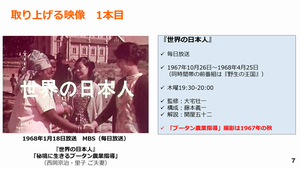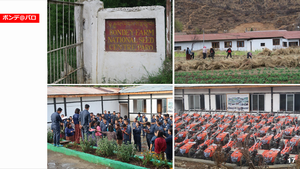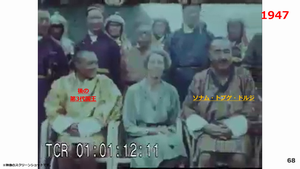- Global Collaboration Center
- Activity
- Report on the Bhutan Seminar Series 2023 (Feb. & Mar.2024)
ページの本文です。
Report on the Bhutan Seminar Series 2023 (Feb. & Mar.2024)
2024年7月22日更新
Beginning in FY2021, the Global Collaboration Center is hosting regional research-based seminars to (1) learn about the Kingdom of Bhutan, which is located in South Asia, and (2) examine development policies and the situation of the country and region in light of these issues. Each seminar includes a film screening, a brief commentary by the presenter, and a question-and-answer session. A total of 15 sessions are scheduled for FY2023.
14th Seminar in the Bhutan Seminar Series 2023 (2024.2.2)
In this 14th seminar, two Japanese programs from the 1960s were featured. Participants asked questions about the differences between the names ‘Tibetan Buddhism’, ‘Lamaism’ and ‘Bhutanese Buddhism’”, the border between China and Bhutan, the third king’s English ability, the lifestyles of matrilineal and polygamous families, and slavery in Bhutan.
About 45 people attended this seminar. Here are some of the participants’ comments: “It was my first time to see valuable video content about Dasho Nishioka”, “It was impressive to see Mr. and Mrs. Nishioka having friendly meals with the local people, and struggling to teach agricultural techniques to local young people”, “As the Bhutanese festival Tshechu includes a memorial service for Padmasambhava (Lama) and the preaching of his teachings, I understood that Lamaism and Bhutanese Buddhism are the same, as explained in the explanation”.
15th Seminar in the Bhutan Seminar Series 2023 (2024.3.2)
The 15th and final session of the year featured Bhutan-related videos (videos featuring Bhutanese people or filmed in Bhutan) from the 1910s to 1940s, during the reigns of the first and second kings.
About 55 people attended this seminar. Here are some of the participants’ comments: “I was able to watch a lot of videos of Bhutan at that time. Watching the videos after learning about the characters deepened my understanding”, “I learned a lot about Bhutan. It was interesting just to watch the valuable videos, but the explanations deepened my learning even further. I also learned a lot from the participants”, “We can read the historical background from past videos, and it gives us hints that we can use in the future. It was very interesting to watch. Thank you very much”.














